Protecting your e-wallet from cyber theft
In today's digital age, your e-wallet is like a treasure chest filled with your hard-earned money and personal information. With the rise of online transactions, it has become increasingly important to safeguard this digital asset from the lurking dangers of cyber theft. Cybercriminals are constantly devising new ways to infiltrate your financial information, making it essential for you to stay one step ahead. So, how can you protect your e-wallet from these digital thieves? In this article, we will explore essential strategies and tips that will help you keep your financial information secure and your mind at ease.
Cyber theft is a term that encompasses various methods used by criminals to gain unauthorized access to your personal and financial information. Think of it as a digital pickpocketing spree, where thieves use sophisticated techniques to swipe your data right from under your nose. By understanding the common tactics employed by these cybercriminals, you can adopt proactive measures to fortify your e-wallet against potential threats. Whether it's through phishing scams, malware, or social engineering, being aware of these methods allows you to recognize the signs and take action before it's too late.
Creating strong, unique passwords is a fundamental step in securing your e-wallet. Imagine your password as the key to your treasure chest; if it's weak, it's like leaving the door wide open for anyone to waltz in. A strong password should be a mix of uppercase and lowercase letters, numbers, and special characters. It should also be at least 12 characters long. Here are some tips for remembering your passwords:
- Use a passphrase: Create a memorable phrase and use the first letter of each word.
- Incorporate numbers and symbols: Replace letters with similar-looking numbers or symbols.
- Write it down in a secure place: If all else fails, jot it down and keep it hidden.
Password managers can simplify the process of creating and storing complex passwords. These tools act as a vault for your passwords, allowing you to generate strong, unique passwords for each of your accounts without the hassle of remembering them all. By using a password manager, you can enhance your e-wallet security and focus on what really matters—your financial well-being.
Not all password managers are created equal. When selecting a password manager for your e-wallet, consider the following key features:
- Encryption: Ensure that the password manager uses strong encryption to protect your data.
- Multi-device support: Look for a manager that can sync across your devices.
- User-friendly interface: Choose one that is easy to navigate and use.
Two-factor authentication (2FA) adds an extra layer of security to your e-wallet. It's like having a bouncer at the door of your treasure chest, ensuring that only you can access it. To set up 2FA, you typically need to provide a second piece of information, such as a code sent to your phone or an authentication app. This means that even if someone gets hold of your password, they won't be able to access your e-wallet without that second factor.
Phishing scams are a common tactic used by cybercriminals to trick you into revealing your personal information. These scams often come in the form of emails or messages that appear to be from legitimate sources, urging you to click on a link or provide sensitive information. To avoid falling victim to these deceptive practices, always check the sender's email address, look for spelling errors, and never click on suspicious links. Remember, if it looks too good to be true, it probably is!
Keeping your devices and applications updated is vital for security. Software updates often include patches for vulnerabilities that cybercriminals can exploit. By regularly updating your software, you are closing the door on potential threats. Think of it as maintaining your digital fortress—without regular upkeep, it becomes easier for intruders to breach your defenses.
Automatic updates can ensure your systems are always protected. Most devices and applications offer an option to enable automatic updates, meaning you won't have to remember to do it manually. This feature is like having a security guard who automatically locks the doors for you—keeping your e-wallet safe even when you’re not paying attention.
Public Wi-Fi networks pose significant risks to e-wallet security. Using these networks is like leaving your treasure chest unattended in a crowded place. To safely use public Wi-Fi without compromising your financial information, consider using a Virtual Private Network (VPN) to encrypt your connection. Additionally, avoid accessing sensitive information, like your e-wallet, while connected to public networks.
Regularly monitoring your e-wallet transactions can help you detect unauthorized activity early. Just like keeping an eye on your bank statements, staying vigilant about your e-wallet transactions allows you to spot discrepancies before they escalate. Make it a habit to check your transactions regularly, and don't hesitate to report any suspicious activity immediately.
Transaction alerts can provide immediate notifications of suspicious activity. Most e-wallet services allow you to set up alerts for transactions over a certain amount or for any unusual activity. This feature acts as an early warning system, giving you peace of mind knowing that you’ll be notified of any potential threats right away.
In the event of a security breach, knowing the immediate steps to take is crucial. If you suspect that your e-wallet has been compromised, act quickly. Change your passwords, enable 2FA if you haven't already, and notify your e-wallet provider. They can assist you in securing your account and recovering any lost funds. Remember, the faster you act, the better your chances of minimizing damage.
Q1: What is the best way to create a strong password?
A1: Use a mix of letters, numbers, and symbols, and aim for at least 12 characters. Consider using a passphrase for better memorability.
Q2: How often should I update my passwords?
A2: It's a good practice to update your passwords every 3 to 6 months or immediately if you suspect a breach.
Q3: Is it safe to use public Wi-Fi for transactions?
A3: It’s best to avoid using public Wi-Fi for sensitive transactions. If you must, use a VPN for added security.
Q4: How can I tell if I've been a victim of cyber theft?
A4: Look for unauthorized transactions, unexpected alerts, or strange login attempts. If you notice anything unusual, investigate immediately.
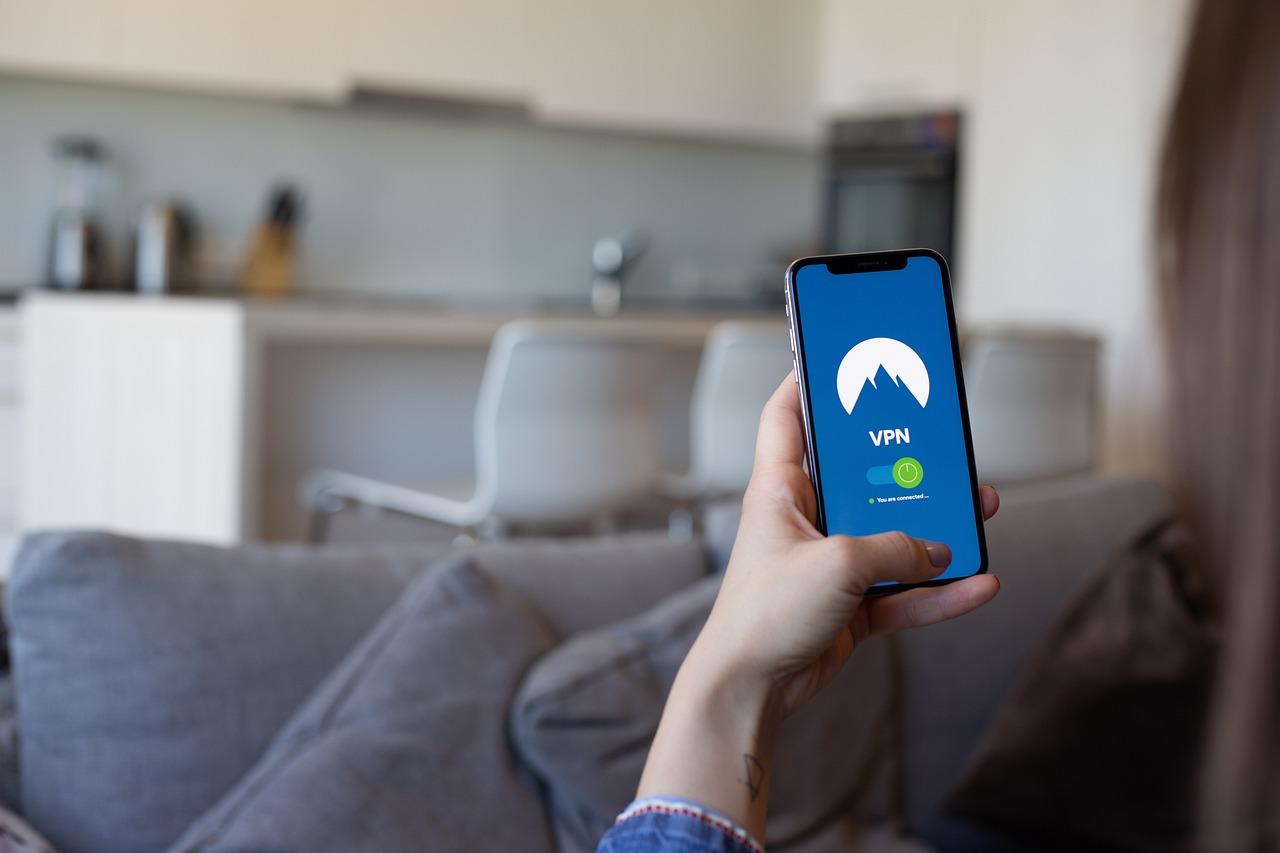
Understanding Cyber Theft
In today's digital age, where our lives are increasingly intertwined with technology, the threat of cyber theft looms larger than ever. But what exactly is cyber theft? At its core, it refers to the unauthorized access and extraction of personal and financial information by malicious actors. Picture your e-wallet as a treasure chest filled with valuable items—your hard-earned money, sensitive data, and personal details. Now imagine a thief trying to break into that chest. This is the reality many face when they neglect the security of their digital wallets.
Cybercriminals employ a variety of tactics to infiltrate your e-wallet, often exploiting vulnerabilities in software, user behavior, or even the very networks we rely on for connectivity. Here are some common methods they use:
- Phishing: This involves tricking users into revealing sensitive information through deceptive emails or websites that appear legitimate.
- Malware: Malicious software can be installed on your devices without your knowledge, allowing hackers to access your data.
- Man-in-the-Middle Attacks: Cybercriminals can intercept communications between you and your e-wallet service, capturing your information.
Understanding these methods is crucial for taking proactive measures to protect your e-wallet. For instance, recognizing a phishing email can save you from giving away your login credentials. Similarly, being aware of malware can prompt you to install antivirus software or avoid suspicious downloads. It's like being a detective in your own financial safety—staying alert to the signs can mean the difference between security and vulnerability.
Moreover, the emotional toll of cyber theft can be profound. Imagine waking up to find your bank account drained or your personal information sold on the dark web. It's not just about the financial loss; it's about the feeling of violation and helplessness. Therefore, understanding the landscape of cyber theft is not just about protecting your assets; it's about preserving your peace of mind in an increasingly digital world.
In conclusion, as we navigate through this digital era, being informed about the tactics used by cybercriminals is the first step towards fortifying your defenses. By recognizing the threats, you can take the necessary precautions to safeguard your e-wallet and ensure that your financial information remains secure.
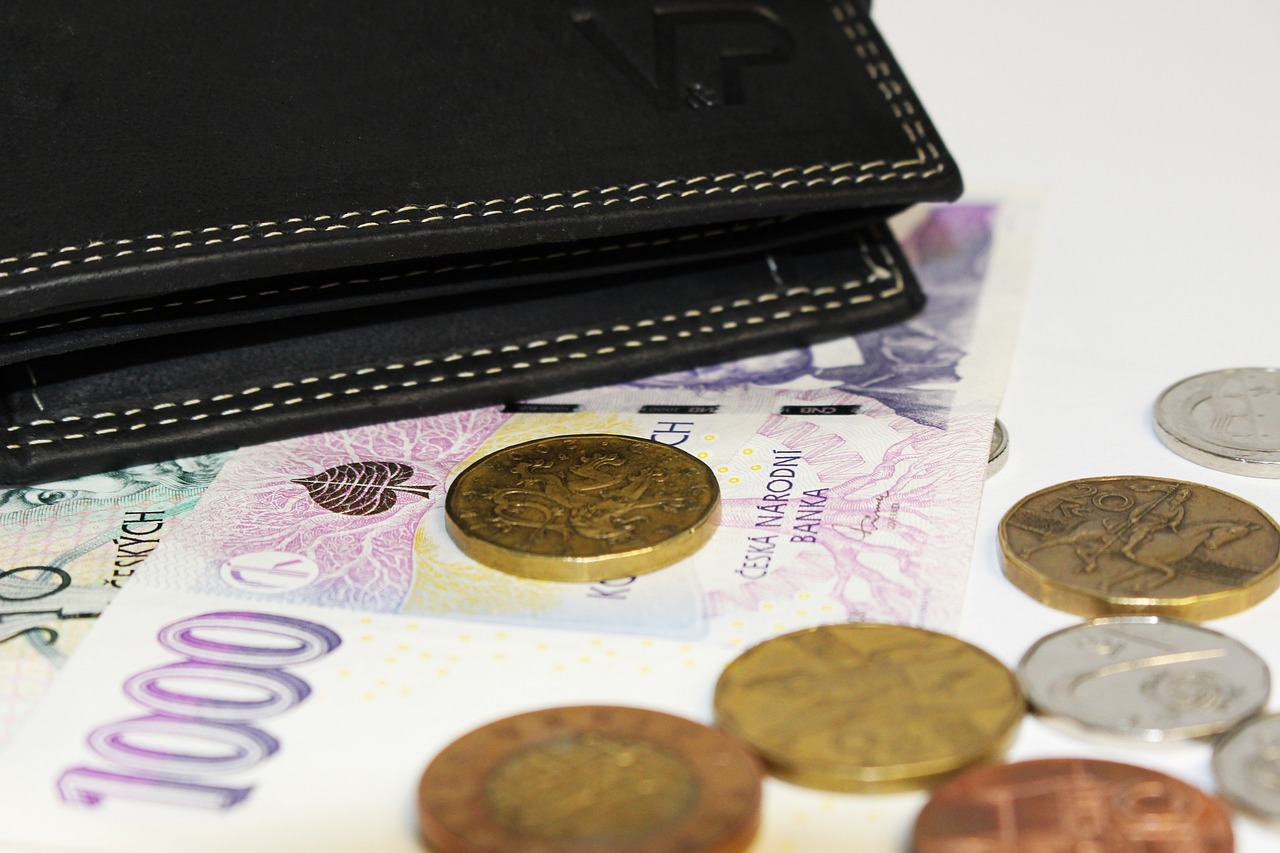
Importance of Strong Passwords
When it comes to securing your e-wallet, strong passwords are your first line of defense. Think of your password as the key to a safe; if it's weak, it's like leaving the door wide open for anyone to stroll in and take what they want. In an age where cyber theft is rampant, creating a password that is both unique and complex is essential. A strong password typically consists of a mix of uppercase and lowercase letters, numbers, and special characters. For instance, instead of using a simple password like "password123," consider a more robust option like "P@ssw0rd!2023." This not only makes it harder for potential hackers to guess but also protects your sensitive financial information.
However, creating a strong password is just the beginning. It’s also important to avoid reusing passwords across multiple sites. If one site gets compromised, your other accounts could be at risk. To help illustrate this, let’s look at a quick comparison:
| Password Type | Security Level | Example |
|---|---|---|
| Weak Password | Low | 123456 |
| Moderate Password | Medium | Password123! |
| Strong Password | High | G0ldfish#2023 |
To help you remember these complex passwords, consider using a password manager. These tools can generate and store your passwords securely, so you don’t have to rely on memory alone. It’s like having a personal vault for all your keys! Plus, many password managers offer additional features like password strength checks and breach monitoring, which can alert you if your credentials are compromised.
In addition to using strong passwords, implementing two-factor authentication is a smart move. This adds an extra layer of security, making it significantly harder for anyone to access your accounts, even if they somehow obtain your password. So, the next time you set up an account, remember: a strong password is not just a recommendation; it’s a necessity. Protecting your e-wallet starts with you!
- What makes a password strong? A strong password contains a mix of letters, numbers, and symbols, and is at least 12 characters long.
- How often should I change my passwords? It's advisable to change your passwords every 3-6 months, especially for sensitive accounts like your e-wallet.
- Can I use the same password for multiple accounts? No, using the same password increases the risk of multiple accounts being compromised if one is hacked.
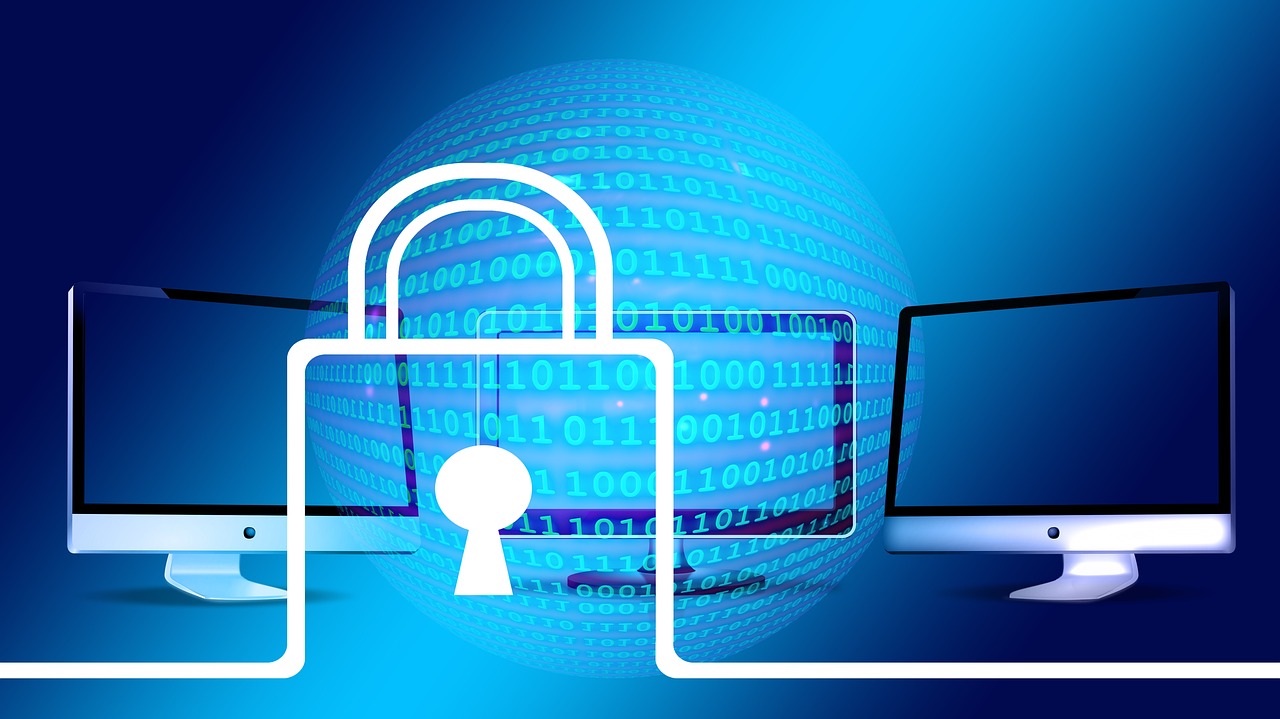
Using Password Managers
In today's digital landscape, where our lives are intricately woven into the web, managing passwords can feel like juggling flaming torches. It's a daunting task, and the stakes are high. This is where password managers step in as your digital safety net. These tools not only help you create strong, unique passwords for each of your accounts but also store them securely, so you don’t have to remember every single one. Imagine having a vault that safely keeps all your keys, while you only need to remember one master key. That’s the magic of a password manager!
One of the biggest advantages of using a password manager is the ability to generate complex passwords that are nearly impossible to crack. For example, instead of using "Password123," which is like leaving your front door wide open, a password manager can create something like "G7&f$2q@9Lz!"—a combination that would take cybercriminals ages to decipher. Plus, these tools often include features that alert you if any of your passwords have been compromised in a data breach, allowing you to act swiftly to secure your accounts.
When choosing a password manager, it’s crucial to consider a few key features that can enhance your security and user experience. Look for options that offer:
- End-to-End Encryption: This ensures that only you can access your passwords, even the provider can't see them.
- Cross-Platform Compatibility: Whether you use a computer, tablet, or smartphone, your password manager should work seamlessly across all devices.
- User-Friendly Interface: The best tools are intuitive and easy to navigate, so you won't waste time trying to figure out how to use them.
Incorporating a password manager into your routine can significantly reduce the risk of cyber theft. It's like having a personal security guard for your digital life. Not only does it streamline your login process, but it also fortifies your defenses against cybercriminals who are constantly lurking in the shadows, waiting for an opportunity to strike. So, if you haven't already, consider making the switch to a password manager. Your future self will thank you!
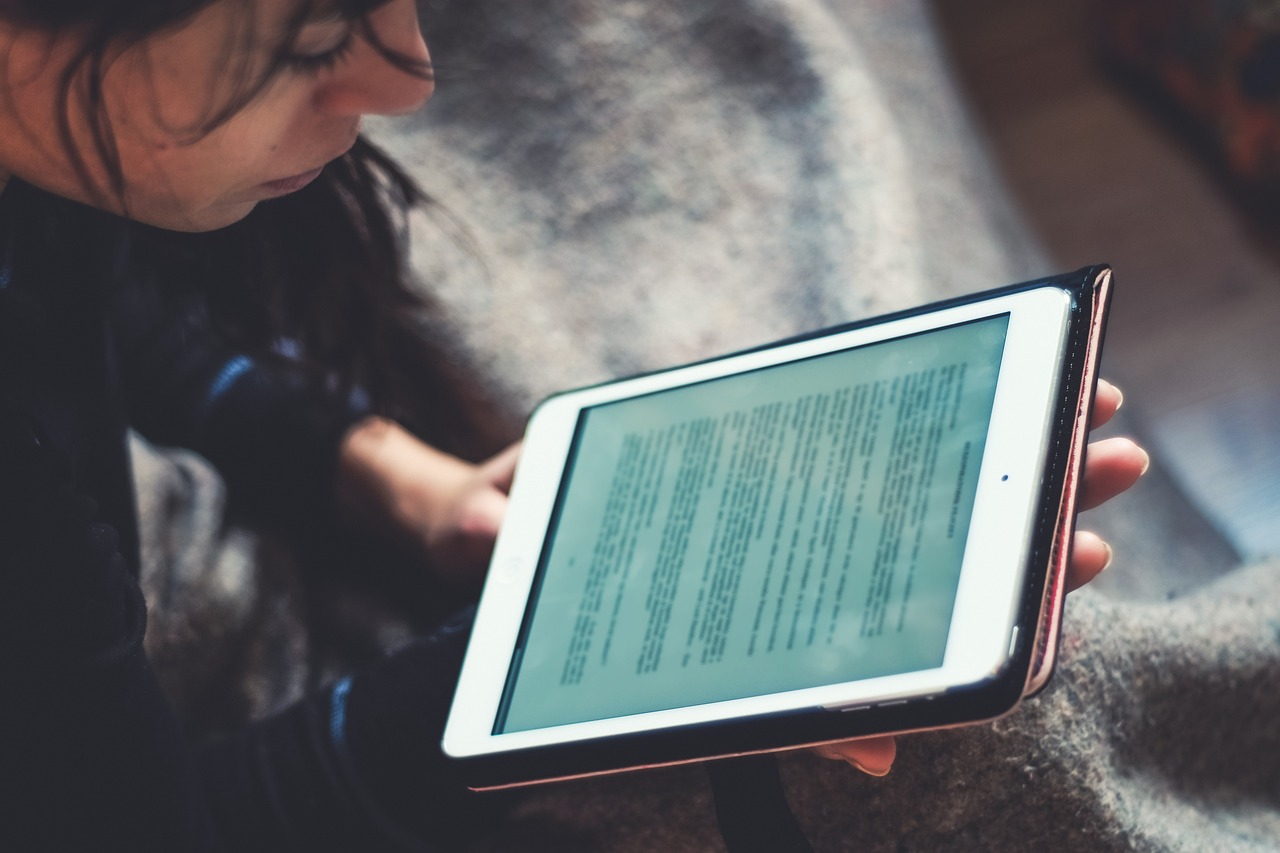
Choosing the Right Password Manager
When it comes to safeguarding your e-wallet, selecting the right password manager is akin to choosing a reliable vault for your most valuable possessions. With so many options available, it can feel overwhelming to find the one that fits your needs perfectly. A good password manager not only stores your passwords securely but also helps you generate strong, unique passwords for each of your accounts. So, what should you look for?
First and foremost, security features are paramount. Look for a password manager that uses strong encryption methods, such as AES-256, to ensure that your data remains private and secure. Additionally, features like biometric login options (fingerprint or facial recognition) can give you an extra layer of protection. You wouldn’t want just anyone to access your vault, right?
Another important factor is cross-platform compatibility. You want a password manager that works seamlessly across all your devices—be it your smartphone, tablet, or computer. Imagine trying to access your passwords while on the go, only to find that your chosen manager doesn’t support your mobile device. Frustrating, isn’t it? Make sure the password manager you choose has apps for all the platforms you use.
Ease of use is also critical. A user-friendly interface can make a world of difference, especially if you’re not particularly tech-savvy. Look for a password manager that offers intuitive navigation and clear instructions. After all, the goal is to simplify your life, not complicate it further. A well-designed dashboard with features like password strength indicators can help you manage your passwords effectively.
Additionally, consider the price. While there are free options available, they often come with limitations, such as fewer features or less robust security. Premium password managers might require a subscription, but think of it as an investment in your digital safety. Many of them offer a free trial period, so you can test the waters before committing.
Finally, read user reviews and do your research. Check forums, tech blogs, and review sites to get a sense of how others feel about the password manager you’re considering. Look for feedback on customer support, usability, and any potential issues. A password manager with a strong reputation can provide peace of mind, knowing that you’re in good hands.
In summary, choosing the right password manager involves evaluating security features, compatibility, usability, pricing, and user feedback. By taking the time to make an informed decision, you can significantly enhance the security of your e-wallet and protect your financial information from cyber threats.
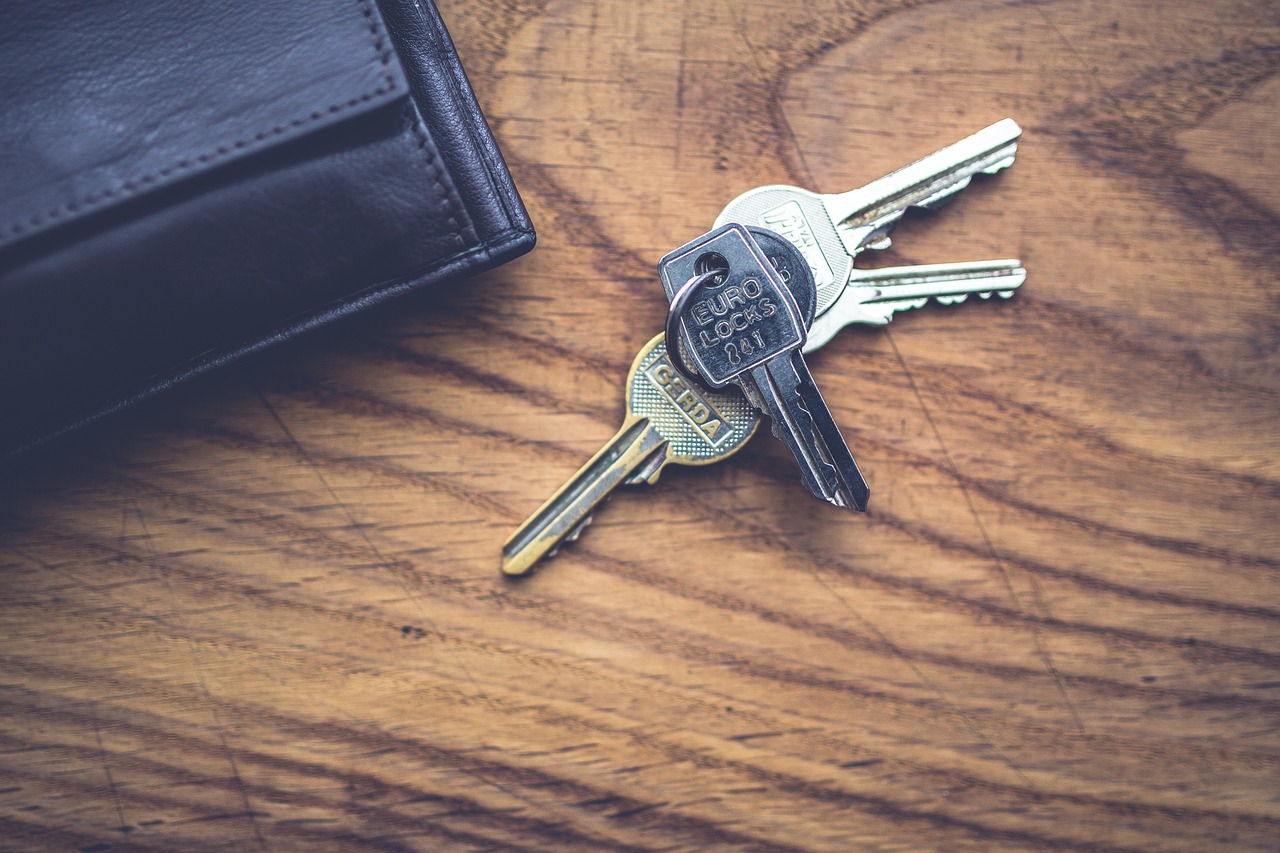
Setting Up Two-Factor Authentication
Setting up Two-Factor Authentication (2FA) is like adding a high-tech security guard to your e-wallet. It’s an extra layer of protection that can make it significantly harder for cybercriminals to gain access to your financial information. So, how does it work? When you log in to your e-wallet, after entering your password, you’ll receive a second verification step, typically via a text message or an authentication app. This means that even if someone has your password, they still can’t access your account without that second piece of information.
To get started, here’s a simple step-by-step guide to setting up 2FA for your e-wallet:
- Log into your e-wallet account: Start by accessing your account settings.
- Find the Security Settings: Look for an option labeled 'Security' or 'Account Security.'
- Select Two-Factor Authentication: Choose the option to enable 2FA. You may be prompted to enter your password again.
- Choose Your Method: Most platforms offer several options for receiving your authentication code, such as SMS, email, or an authentication app like Google Authenticator or Authy. Select the method that works best for you.
- Verify Your Method: After choosing your method, you’ll likely receive a verification code. Enter this code to confirm that you have access to your chosen method.
- Backup Codes: Many services will provide you with backup codes. Keep these in a safe place; they can be lifesavers if you ever lose access to your primary 2FA method.
Implementing 2FA is a straightforward process, but it’s incredibly effective. It’s like having a double lock on your front door—while a thief might pick the first lock (your password), they won’t have the key to the second lock (your authentication code). In today’s world, where cyber threats are ever-evolving, taking this simple step can significantly reduce the risk of unauthorized access to your e-wallet.
Remember, while 2FA greatly enhances security, it’s not a catch-all solution. It should be part of a broader strategy that includes strong passwords, regular software updates, and awareness of phishing scams. By combining these strategies, you can create a robust defense against cyber theft.
- What is Two-Factor Authentication?
Two-Factor Authentication is a security process that requires two different forms of identification before granting access to an account. - Why is 2FA important?
2FA adds an extra layer of security, making it much harder for unauthorized users to access your accounts even if they have your password. - Can I use 2FA on all my accounts?
Most major online services and e-wallets offer 2FA as an option, but not all. Always check the security settings of your accounts. - What if I lose my phone?
If you lose your phone, use backup codes to access your account. It’s also wise to have a recovery method set up in advance.

Recognizing Phishing Scams
In the vast digital landscape, phishing scams are like wolves in sheep's clothing, lurking to prey on unsuspecting individuals. These scams often masquerade as legitimate communications from trusted sources, such as banks or popular online services. The goal? To trick you into revealing sensitive information like your passwords or credit card details. So, how can you spot these deceptive tactics before they lead you down a risky path?
Firstly, always be wary of unsolicited emails or messages that ask for personal information. Legitimate organizations rarely request sensitive data through email. If you receive a message that seems suspicious, take a moment to scrutinize the sender's email address. Often, phishing attempts come from addresses that look similar to, but are not exactly the same as, official domains. For example, instead of support@bank.com, you might see support@bank-secure.com.
Another common tactic used by cybercriminals is creating a sense of urgency. They might claim that your account will be suspended unless you act immediately. This psychological trick aims to bypass your critical thinking and push you into making hasty decisions. Remember, if it feels rushed, it's often a red flag. Take a step back, breathe, and evaluate the situation.
Moreover, look out for poor grammar and spelling mistakes in the communication. Many phishing attempts originate from non-native English speakers, leading to awkward phrasing or typos. If an email from your bank contains glaring errors, it's likely a scam. Always trust your instincts; if something feels off, it probably is.
Lastly, if you ever find yourself unsure about the legitimacy of a message, don't hesitate to contact the organization directly using official contact information from their website. Never use the contact details provided in the suspicious message, as they could lead you straight into the hands of the scammers.
To summarize, here are the key indicators to help you recognize phishing scams:
- Unsolicited requests for personal information: Be suspicious of emails asking for sensitive data.
- Sender's email address: Check for slight variations in the email address.
- Sense of urgency: If they pressure you to act quickly, it's likely a scam.
- Grammatical errors: Look for poor spelling and awkward phrasing.
- Verification: Contact the organization directly using official channels.
By being vigilant and informed, you can significantly reduce your risk of falling victim to phishing scams. Stay alert, and remember that when it comes to your financial security, it’s always better to be safe than sorry!
1. What should I do if I think I've been targeted by a phishing scam?
If you suspect that you've been targeted, do not click on any links or provide any personal information. Report the phishing attempt to the organization being impersonated and consider changing your passwords.
2. Can I recover my information if I've fallen for a phishing scam?
It depends on the situation. If you've given away sensitive information, contact your bank or service provider immediately to mitigate any potential damage. They can guide you through the recovery process.
3. How can I educate myself further about phishing scams?
There are many resources available online, including cybersecurity blogs, official government websites, and your bank's security center. Staying informed is your best defense!

Regular Software Updates
In today's fast-paced digital landscape, keeping your software up to date is more than just a good practice; it's a necessity. Every day, cybercriminals are developing new methods to exploit vulnerabilities in outdated software. Think of your e-wallet as a high-security vault. If the vault's door is old and rusty, it's much easier for a thief to break in. Regular software updates act as the maintenance crew that ensures your vault remains impenetrable.
Software companies are constantly working to identify and patch security flaws that could be exploited. When you ignore these updates, you’re essentially leaving the door wide open for hackers. According to a report from a leading cybersecurity firm, over 60% of successful cyber attacks target systems that haven't been updated. This statistic alone should make you reconsider your update habits!
Moreover, updates often come with new features and enhancements that can improve your overall experience. So, while you’re securing your e-wallet, you might also be gaining access to better functionality. It’s like getting a shiny new lock on your vault that not only keeps it safe but also makes it easier to use.
To ensure your e-wallet remains secure, here are a few tips regarding software updates:
- Prioritize Updates: Make it a habit to check for updates regularly. Most devices have settings that allow you to see pending updates.
- Read Update Notes: Before you update, take a moment to read what the update includes. This can give you insight into what vulnerabilities are being addressed.
- Backup Your Data: Always back up your important data before performing updates. This way, if something goes wrong, you won’t lose your financial information.
Now, let’s talk about how to make this process even easier. Many devices and applications offer the option to enable automatic updates. This feature ensures that your software is always up to date without you having to lift a finger. However, you should still periodically check to confirm that updates are being applied successfully.
In summary, regular software updates are a critical component of your e-wallet's security. They not only protect your financial information but also enhance your user experience. By making updates a priority, you’re taking a proactive step towards safeguarding your digital assets.
Q1: How often should I update my software?
A1: It’s best to check for updates at least once a week. Most devices can be set to update automatically, which is highly recommended.
Q2: What should I do if I miss an update?
A2: Don’t worry! Just check for updates as soon as you can and install any that are available. It's never too late to secure your device.
Q3: Are automatic updates safe?
A3: Yes, automatic updates are generally safe and are one of the best ways to ensure your software is always up to date. However, it's wise to periodically check that updates are being applied correctly.

Enabling Automatic Updates
In the fast-paced world of technology, keeping your software up to date is one of the simplest yet most effective ways to protect your e-wallet from cyber threats. Think of it as regularly changing the locks on your front door; each update acts as a new, stronger lock that keeps the bad guys out. Automatic updates ensure that your devices and applications are always running the latest security patches and features without you having to lift a finger.
So, how do you enable automatic updates? The process may vary slightly depending on the device or operating system you’re using, but the general principles are similar. Here’s a quick breakdown:
- For Windows: Go to Settings, then Update & Security. From there, you can select Windows Update and turn on automatic updates.
- For macOS: Open System Preferences, click on Software Update, and check the box for Automatically keep my Mac up to date.
- For Android: Navigate to Settings, then System, and select Advanced. Here, you can tap on System Update and enable automatic updates.
- For iOS: Go to Settings, tap General, then Software Update, and enable Automatic Updates.
Enabling these features not only saves you time but also ensures that you’re protected against the latest vulnerabilities that cybercriminals may exploit. Just like a fortress that fortifies its walls, automatic updates build a strong defense around your digital assets. However, it’s also wise to periodically check for updates manually, especially if you hear about a new security threat in the news.
In addition to system updates, don’t forget to keep your applications updated as well. Many apps, especially those that handle sensitive information like your e-wallet, release updates to patch security flaws. By enabling automatic updates for your apps, you create an additional layer of security, making it harder for cyber thieves to breach your defenses.
To summarize, enabling automatic updates is a crucial step in safeguarding your e-wallet. It ensures that you are consistently protected against new threats and vulnerabilities. So, take a moment to check your settings today—your future self (and your finances) will thank you!
1. What are automatic updates?
Automatic updates are features that allow your device or software to automatically download and install the latest updates without requiring manual intervention from you. This includes security patches, bug fixes, and new features.
2. Why are automatic updates important for e-wallet security?
Automatic updates are essential because they help protect your e-wallet from vulnerabilities that cybercriminals can exploit. Regular updates ensure that you have the latest security measures in place.
3. Can I disable automatic updates?
Yes, you can disable automatic updates, but it’s not recommended. Doing so leaves your device vulnerable to attacks. If you prefer to control when updates occur, consider setting reminders to check for updates regularly instead.
4. How often should I check for updates?
While automatic updates handle the majority of updates for you, it’s still a good idea to check for updates manually once a month or whenever you hear about a new security threat.
5. What should I do if an update causes issues?
If an update causes problems, you can often roll back to a previous version of the software. Check the support page for the specific software or device for instructions on how to do this.
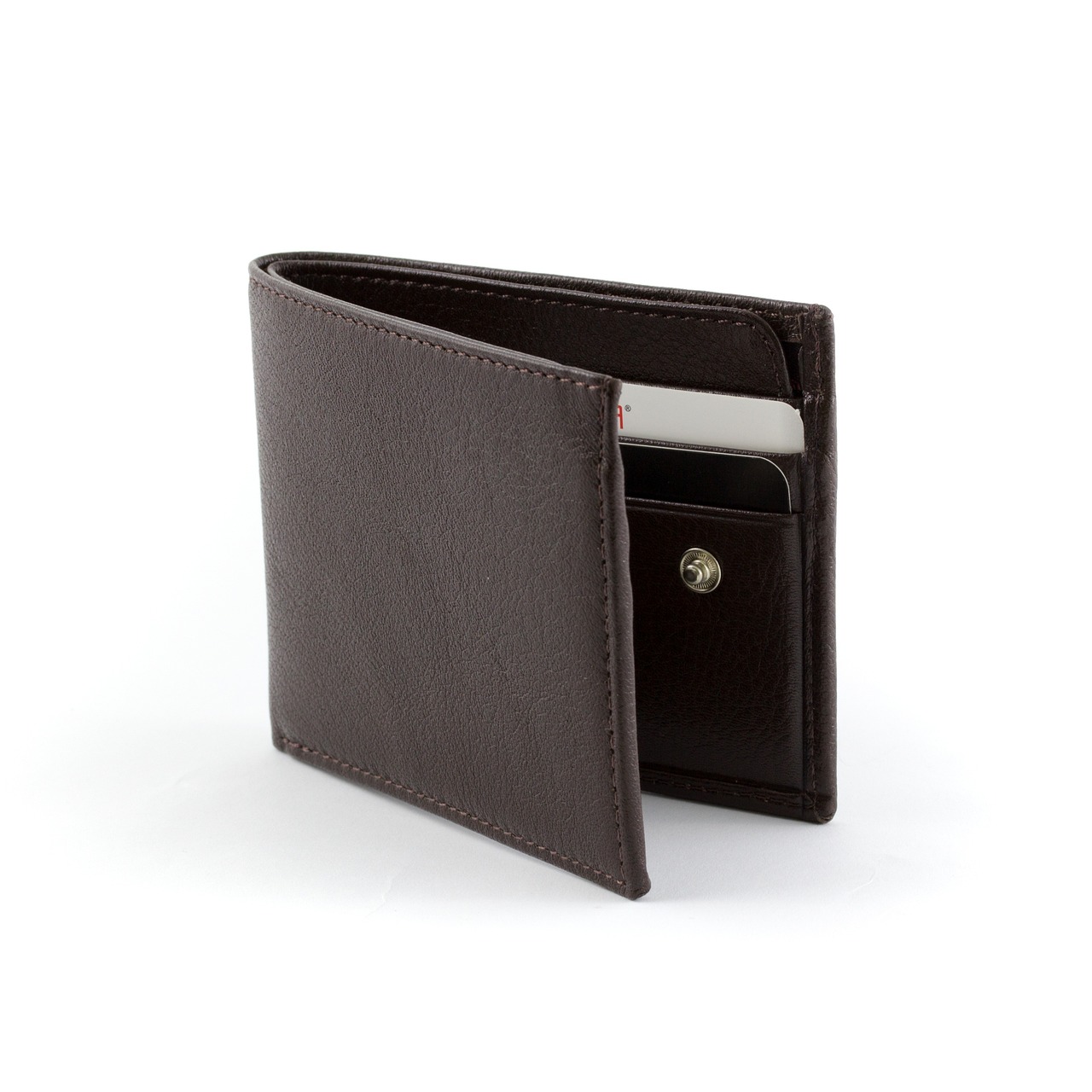
Securing Public Wi-Fi Connections
Using public Wi-Fi can feel like a double-edged sword. On one hand, it offers convenience, allowing you to check your emails, browse social media, or even manage your e-wallet while sipping a latte at your favorite café. On the other hand, it exposes you to significant risks, especially when it comes to cyber theft. Imagine walking through a crowded place, your wallet in your pocket, while someone tries to pickpocket you. This is essentially what happens when you connect to an unsecured public Wi-Fi network.
So, how can you protect your e-wallet and sensitive information while using public Wi-Fi? Here are some vital strategies to consider:
- Use a Virtual Private Network (VPN): A VPN encrypts your internet connection, making it nearly impossible for hackers to intercept your data. Think of it as a secure tunnel that protects your information from prying eyes.
- Connect to Secure Networks Only: Always look for networks that require a password. Open networks are like leaving your front door wide open; anyone can walk in and take whatever they want.
- Disable Sharing Settings: Before connecting to public Wi-Fi, turn off file sharing, printer sharing, and public folder sharing. This minimizes the chances of someone accessing your personal files.
- Forget the Network After Use: Once you’re done using a public Wi-Fi connection, make sure to forget the network on your device. This prevents your device from automatically reconnecting in the future, which could expose you to risks.
Additionally, always ensure that the websites you visit are secure. Look for "https://" in the URL, which indicates that the site is using a secure connection. If you’re entering sensitive information, like your e-wallet credentials, make sure the site is encrypted. It’s like checking if the store you’re buying from has a secure checkout process before handing over your credit card.
Finally, if you notice any suspicious activity in your e-wallet after using public Wi-Fi, don’t hesitate to take immediate action. Change your passwords, notify your bank, and keep an eye on your transactions. The key is to remain vigilant and proactive. Remember, in the digital world, it’s always better to be safe than sorry!
Q: Is it safe to use public Wi-Fi for online banking?
A: It's generally not recommended to conduct sensitive transactions, like online banking, over public Wi-Fi without a VPN. The risks of interception are high.
Q: What should I do if I suspect my e-wallet has been compromised?
A: Immediately change your passwords, enable two-factor authentication if available, and notify your financial institution. Keep an eye on your transactions for any unauthorized activities.
Q: Can I trust all VPN services?
A: Not all VPN services are created equal. Research and choose a reputable VPN provider with strong encryption standards and a good track record for privacy protection.

Monitoring Transactions
In today's fast-paced digital world, keeping an eye on your e-wallet transactions is more important than ever. With cyber theft on the rise, regular monitoring serves as your first line of defense against unauthorized access and fraudulent activities. Just like you would check your bank statements for any suspicious charges, it's essential to apply the same vigilance to your e-wallet. Think of your e-wallet as a treasure chest; if you don’t regularly check it, you might be unaware that someone is trying to pilfer your riches!
By actively monitoring your transactions, you can quickly spot any discrepancies or unauthorized charges. This proactive approach not only helps you catch potential fraud early but also provides peace of mind knowing that you are in control of your finances. So, how can you effectively monitor your e-wallet transactions? Here are some essential practices to consider:
- Regularly Check Your Transaction History: Make it a habit to log into your e-wallet account at least once a week to review your transaction history. This will help you identify any unfamiliar transactions that may require further investigation.
- Use Financial Management Tools: Many e-wallet providers offer built-in tools that allow you to categorize and analyze your spending. Utilizing these tools can give you a clearer picture of your financial habits and alert you to any unusual activity.
- Set Up Alerts: Most e-wallets allow you to set up transaction alerts via email or text message. These alerts can notify you of any activity in real-time, making it easier to catch unauthorized transactions as they happen.
Setting up alerts is particularly beneficial because it adds an extra layer of security. Imagine receiving a notification for every transaction made; this way, even if someone gains access to your account, you’ll be the first to know. But what should you do if you notice something suspicious? Here’s a quick guide:
| Step | Action |
|---|---|
| 1 | Immediately change your password to prevent further unauthorized access. |
| 2 | Contact your e-wallet provider to report the suspicious activity and seek their guidance. |
| 3 | Monitor your other financial accounts for any unusual activity. |
| 4 | Consider enabling two-factor authentication if you haven’t already. |
By following these steps, you can take immediate action to protect your assets and recover from any potential losses. Remember, the quicker you respond to suspicious activity, the better your chances of safeguarding your financial information. In this digital age, being proactive is not just an option; it's a necessity.
Q: How often should I check my e-wallet transactions?
A: It's advisable to check your e-wallet transactions at least once a week to catch any suspicious activity early.
Q: What should I do if I find an unauthorized transaction?
A: Immediately change your password, report the activity to your e-wallet provider, and monitor your other accounts for any unusual transactions.
Q: Can I set up alerts for my e-wallet transactions?
A: Yes, most e-wallet services allow you to set up transaction alerts via email or SMS to notify you of any activity in real-time.

Setting Up Alerts
Setting up transaction alerts is one of the smartest moves you can make to bolster the security of your e-wallet. Imagine this: you’re going about your day, and suddenly your phone buzzes with a notification about a transaction you didn’t make. This instant alert can be a lifesaver, allowing you to act quickly before any significant damage is done. But how do you go about setting these alerts? It’s easier than you might think!
Most e-wallet providers offer customizable alert settings that you can tailor to your preferences. Typically, you can choose to receive notifications for various activities, such as:
- Transactions above a certain amount
- Logins from new devices
- Changes to your account settings
By enabling these alerts, you create a digital safety net that keeps you informed about your financial activities. It’s like having a watchful guardian over your e-wallet, ready to sound the alarm at the first sign of trouble. To set up these alerts, follow these simple steps:
- Log into your e-wallet account.
- Navigate to the settings or security section.
- Look for the option labeled “Alerts” or “Notifications.”
- Choose the types of alerts you want to receive and how you want to be notified (e.g., via email, SMS, or app notification).
- Save your changes and ensure that your contact information is up to date.
It’s also wise to regularly review your alert settings. As your financial habits change, so should your alert preferences. For instance, if you start making larger transactions, you might want to adjust your alert thresholds to ensure you’re notified of any unusual activity. Remember, the goal is to stay one step ahead of potential threats!
In addition to transaction alerts, consider setting up alerts for any unusual account activities, such as failed login attempts or changes made to your personal information. This proactive approach not only helps in detecting unauthorized access but also reinforces your overall security strategy.
In summary, setting up alerts is a straightforward yet powerful way to protect your e-wallet. By staying informed and vigilant, you can significantly reduce the risk of falling victim to cyber theft. So, take a few moments today to configure those alerts and give yourself peace of mind knowing that you’re taking proactive steps to secure your financial information.
Q: What types of alerts should I set up for my e-wallet?
A: You should consider setting up alerts for transactions above a certain amount, logins from new devices, and any changes to your account settings.
Q: How do I receive these alerts?
A: Alerts can typically be received through email, SMS, or app notifications, depending on your e-wallet provider's options.
Q: Can I customize my alert settings?
A: Yes! Most e-wallet providers allow you to customize your alert preferences to suit your needs and financial habits.
Q: What should I do if I receive an alert for a transaction I didn't make?
A: Immediately contact your e-wallet provider to report the unauthorized transaction and take necessary steps to secure your account.

What to Do if Compromised
Finding out that your e-wallet has been compromised can feel like a punch to the gut. The first thing to remember is to stay calm. Panic won’t help, but taking swift action can make a significant difference in mitigating any potential damage. Here’s a step-by-step guide to help you navigate this stressful situation:
First, immediately change your passwords for your e-wallet and any associated accounts. This is crucial because the longer you wait, the more time cybercriminals have to exploit your information. Make sure to use a strong, unique password that you haven’t used before. If you have a password manager, now is the time to utilize it to create a complex password that’s hard to guess.
Next, enable two-factor authentication (2FA) if you haven't already. This adds an extra layer of security, making it harder for anyone to access your account, even if they have your password. Many e-wallet services offer this feature, so take advantage of it!
After securing your accounts, it’s essential to monitor your financial transactions closely. Review your recent transactions for any unauthorized charges. If you spot anything suspicious, report it to your bank or e-wallet provider immediately. They often have protocols in place to handle such situations and may help you recover lost funds.
If you notice any fraudulent activity, contact your financial institution right away. They can freeze your accounts, investigate the unauthorized transactions, and help you understand your options for recovery. It’s also wise to report the incident to your local law enforcement and any relevant consumer protection agencies, as this can aid in tracking down the perpetrators.
Finally, consider updating your security measures. This might include enhancing your antivirus software, using a VPN when accessing public Wi-Fi, and regularly reviewing your security settings across all your online accounts. Remember, prevention is always better than cure!
In summary, if you find your e-wallet compromised, act swiftly and methodically. Change your passwords, enable 2FA, monitor your accounts, and report any fraudulent activity. By taking these steps, you can regain control and protect your financial future.
- What should I do first if I suspect my e-wallet has been hacked?
Change your passwords immediately and enable two-factor authentication.
- Can I recover lost funds from a compromised e-wallet?
Yes, contact your financial institution as soon as possible. They may be able to help recover lost funds.
- How can I prevent my e-wallet from being compromised in the future?
Use strong, unique passwords, enable two-factor authentication, and regularly monitor your transactions.
Frequently Asked Questions
- What is cyber theft and how does it affect my e-wallet?
Cyber theft refers to the unauthorized access and theft of personal and financial information, often targeting digital wallets. This can lead to loss of funds, identity theft, and unauthorized transactions, making it crucial to protect your e-wallet.
- Why are strong passwords important for e-wallet security?
Strong passwords serve as the first line of defense against unauthorized access. They should be unique, complex, and difficult to guess, as weak passwords can easily be cracked by cybercriminals, putting your financial information at risk.
- How can password managers help me?
Password managers streamline the process of creating and storing complex passwords. They can generate strong passwords and save them securely, so you don't have to remember each one, enhancing your overall e-wallet security.
- What is two-factor authentication and why should I use it?
Two-factor authentication (2FA) adds an extra layer of security by requiring a second form of verification, such as a text message or authentication app, in addition to your password. This makes it significantly harder for unauthorized users to access your e-wallet.
- How can I recognize phishing scams?
Phishing scams often come in the form of emails or messages that appear legitimate but are designed to trick you into providing personal information. Look for red flags like poor grammar, suspicious links, or requests for sensitive information to avoid falling victim.
- Why are regular software updates important?
Regular software updates patch vulnerabilities that cybercriminals can exploit. Keeping your devices and applications up to date ensures that you have the latest security features, helping to protect your e-wallet from potential threats.
- How can I safely use public Wi-Fi for my e-wallet?
To safely use public Wi-Fi, avoid accessing sensitive information and consider using a virtual private network (VPN) to encrypt your connection. This minimizes the risk of cybercriminals intercepting your data while you browse.
- What should I do if I notice unauthorized transactions?
If you detect unauthorized transactions in your e-wallet, immediately change your passwords, enable two-factor authentication, and report the activity to your financial institution. Prompt action can help minimize potential losses.
- How can I set up transaction alerts?
Most e-wallets allow you to set up transaction alerts through their settings. You can choose to receive notifications via email or SMS for any transactions made, which helps you monitor your account for suspicious activity.



















